You’ve splurged on that plush, memory foam cat bed with the faux fur lining and designer pattern. You placed it in the perfect sunny spot. Then you watch, baffled, as your cat completely ignores it and instead curls up inside the Amazon delivery box you were about to toss into recycling. Sound familiar?
This isn’t your cat being deliberately spiteful or ungrateful. There’s actually some fascinating science behind why your feline friend will choose a humble cardboard box over the most luxurious bed money can buy. Let’s be real, cats have been confounding their humans for centuries, but this particular quirk has researchers genuinely intrigued. The reasons go way deeper than you might think, tapping into primal instincts that have been hardwired into cats for thousands of years.
So let’s dive in and explore the surprising truth about your cat’s cardboard obsession.
It’s All About That Safe Haven Feeling
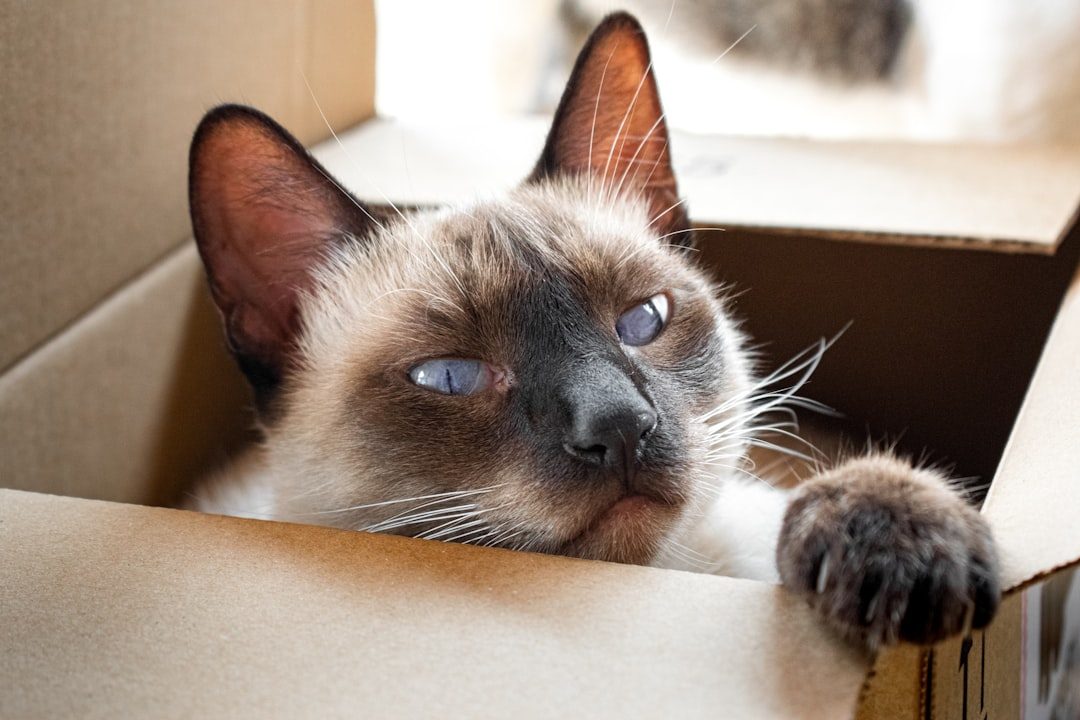
Here’s the thing. A mother cat will seek out a quiet area to birth her kittens, and their first experience will be a safe, enclosed space. This means from the very beginning of their lives, cats associate tight, confined spaces with safety and comfort. That fancy open bed you bought? It might look cozy to you, but to your cat, it feels exposed and vulnerable.
Enclosed spaces give cats a sense of security and a place to find refuge, especially in new environments. Think about it from an evolutionary perspective. In the wild, cats are simultaneously hunters and prey, occupying that precarious middle ground in the food chain. A box provides walls on all sides, meaning nothing can sneak up on them while they’re napping. Your expensive bed sitting out in the open? That’s basically asking them to sleep in the middle of a field.
Stress Relief in Cardboard Form
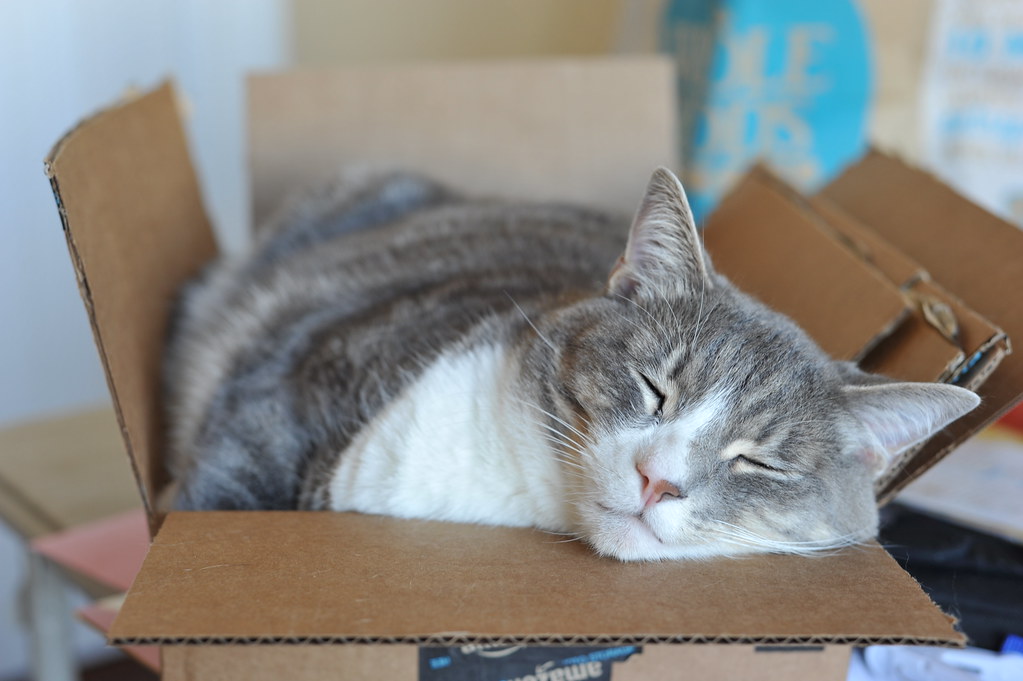
Honestly, if you’re feeling stressed, you probably don’t think to yourself, “I should go sit in a box.” Cats, though? They’re onto something. A study on Dutch shelter cats found that when cats are given boxes, their stress levels decrease significantly faster than cats not given boxes. This isn’t just anecdotal evidence from cat owners, it’s actual scientific research showing measurable differences in stress hormones.
Multiple studies have shown that stress levels decrease faster in newly rescued cats given access to a box. The implications are pretty incredible when you stop to consider them. While we humans might seek comfort in a soft blanket or a favorite chair, cats literally need that enclosed, confined feeling to genuinely relax. Your luxury bed, no matter how soft, simply can’t replicate that psychological security a box provides.
The Temperature Sweet Spot
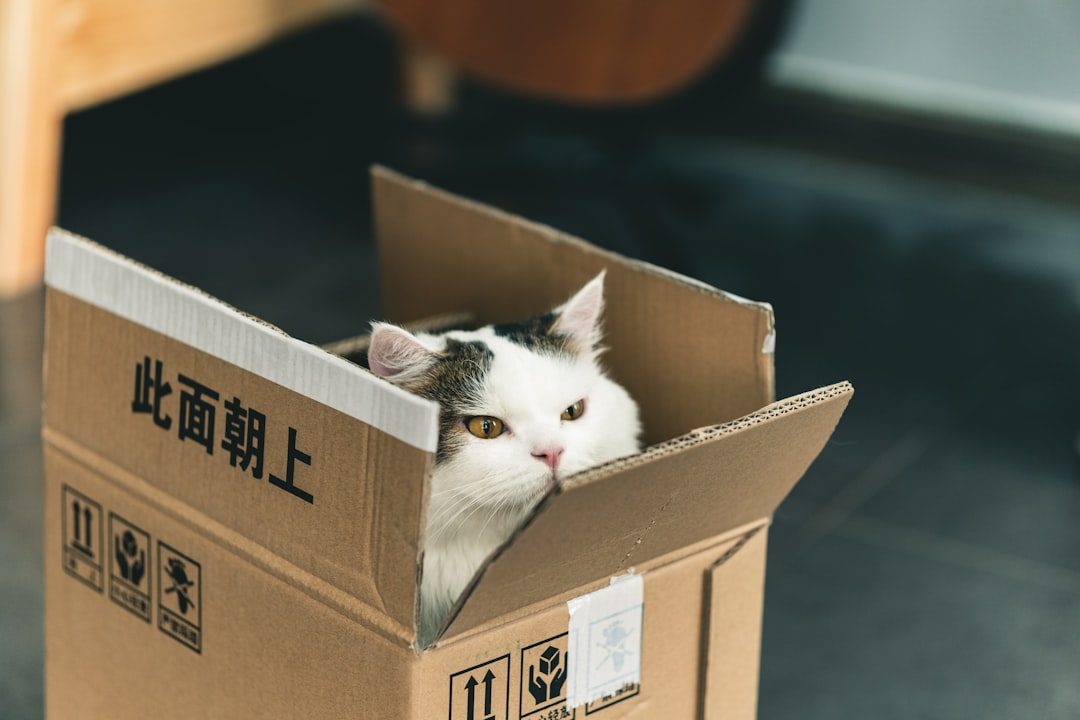
Now this one might surprise you. A study found that cats are most comfortable in temperatures between 86 and 97 F, but most homes are kept at around 72 degrees. That’s a significant temperature gap. Cats essentially want their environment to feel like a tropical vacation, while most of us keep our homes at what feels comfortable for humans.
Boxes act as insulators and trap body heat so our cats can enjoy tropical temperatures without an expensive heating bill. Cardboard is remarkably good at this job, creating a microclimate that’s substantially warmer than the surrounding room. Your plush bed might be soft, but unless it has insulating properties that rival cardboard, it’s not keeping your cat as warm as they’d prefer. It’s hard to say for sure, but this temperature factor might be even more important than the security aspect for some cats.
Built-In Hunting Command Center

Let’s talk about predatory instincts. In the wild, cats are predators who have to be stealthy to catch their next meal, which often involves hiding in small spaces where they can’t be seen, and this is crucial for survival. Even though your pampered house cat has never hunted anything more challenging than a toy mouse, these instincts remain incredibly strong.
Whether they’re stalking a mouse or preparing a sneak attack on your legs as you walk by, cats need tight, hidden spaces to observe and not be seen until the timing is right. A box provides the perfect ambush location. Your cat can peer over the edge, watching everything that happens in the room, ready to pounce at a moment’s notice. That fancy bed sitting out in the open? It’s about as useful for ambush tactics as standing in a spotlight.
Curiosity and Novelty Factor

You know that saying about curiosity and cats? There’s genuine truth to it. A newly arrived box is also a change to a cat’s environment, and cats that live indoors know every inch of their kingdom and immediately notice any changes, making the box something fun and novel to investigate. That bed you bought three months ago? Old news. That Amazon box that showed up yesterday? Brand new territory to explore.
Cats are incredibly sensitive to changes in their environment, and a new box represents an exciting mystery to solve. What’s it smell like? How does it feel? Can I fit inside it? The novelty factor alone can make a plain cardboard box more appealing than a bed they’ve already thoroughly investigated and deemed familiar.
The Texture They Actually Crave
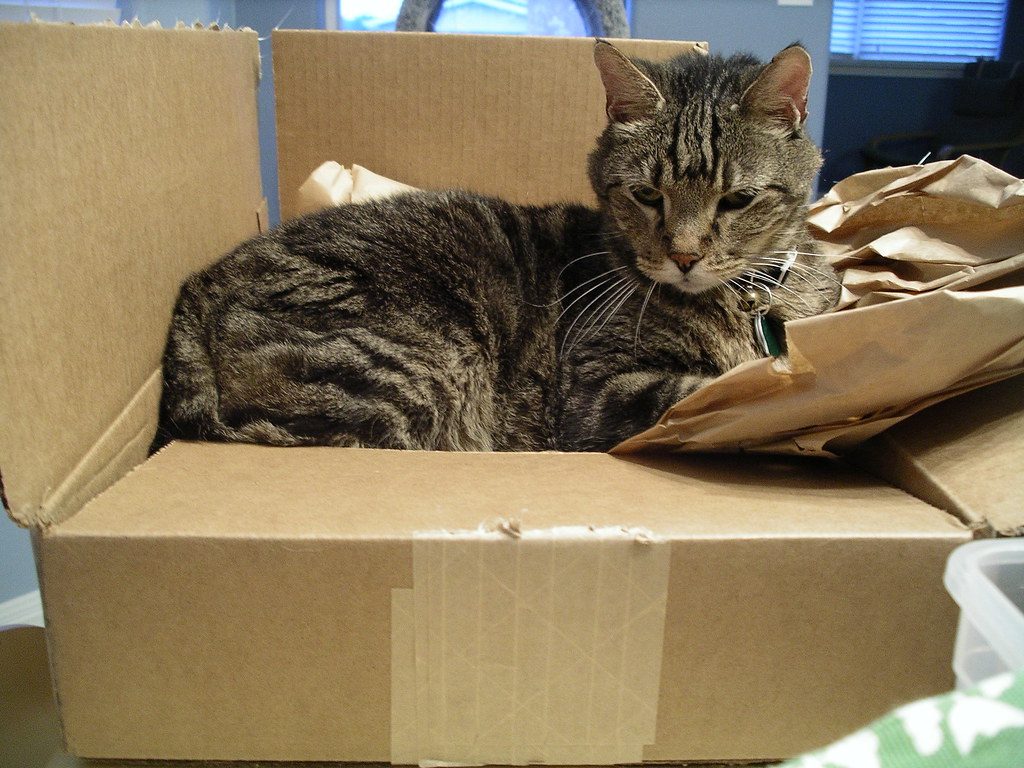
Here’s something most people don’t consider. Cats love the feel of boxes, making them the perfect place for a cat to claw and scratch their nails. The corrugated texture of cardboard provides sensory satisfaction that smooth fabric simply cannot match. It’s not just about sleeping, it’s about the entire experience.
Cats also use scratching as a way to mark territory through scent glands in their paws. Cardboard allows them to engage in this natural behavior without getting in trouble for destroying furniture. Your luxury bed might discourage scratching to preserve its appearance, but that means it’s also preventing your cat from engaging in an instinctive, satisfying behavior. The humble box lets them scratch, bite, and generally do whatever feels right without any consequences.
Territorial Control and Ownership
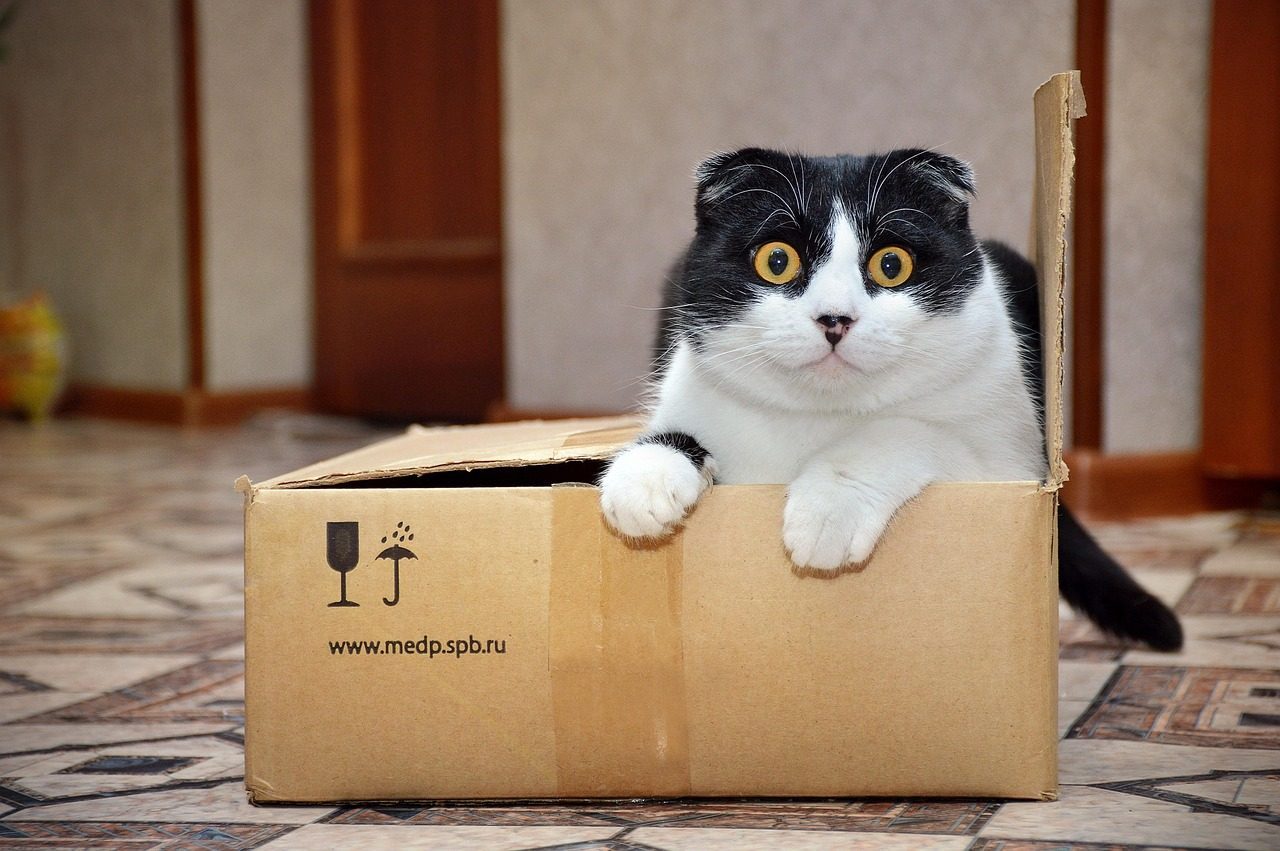
Cats are territorial animals who use scent marking as a way to establish and maintain their territory, and when a cat enters a box, it leaves its scent behind, effectively claiming the box as its own territory, which is a way for cats to assert control over their environment. This behavioral aspect is absolutely crucial to understanding the box obsession.
When you place a new bed somewhere, you’ve made that decision. When a box appears, your cat gets to discover it, investigate it, and claim it entirely on their own terms. That sense of ownership and control matters enormously to cats, who are fundamentally independent creatures. They didn’t ask for that fancy bed, you imposed it on them. The box? That’s their conquest, their discovery, their territory.
Why Your Investment Keeps Losing to Cardboard
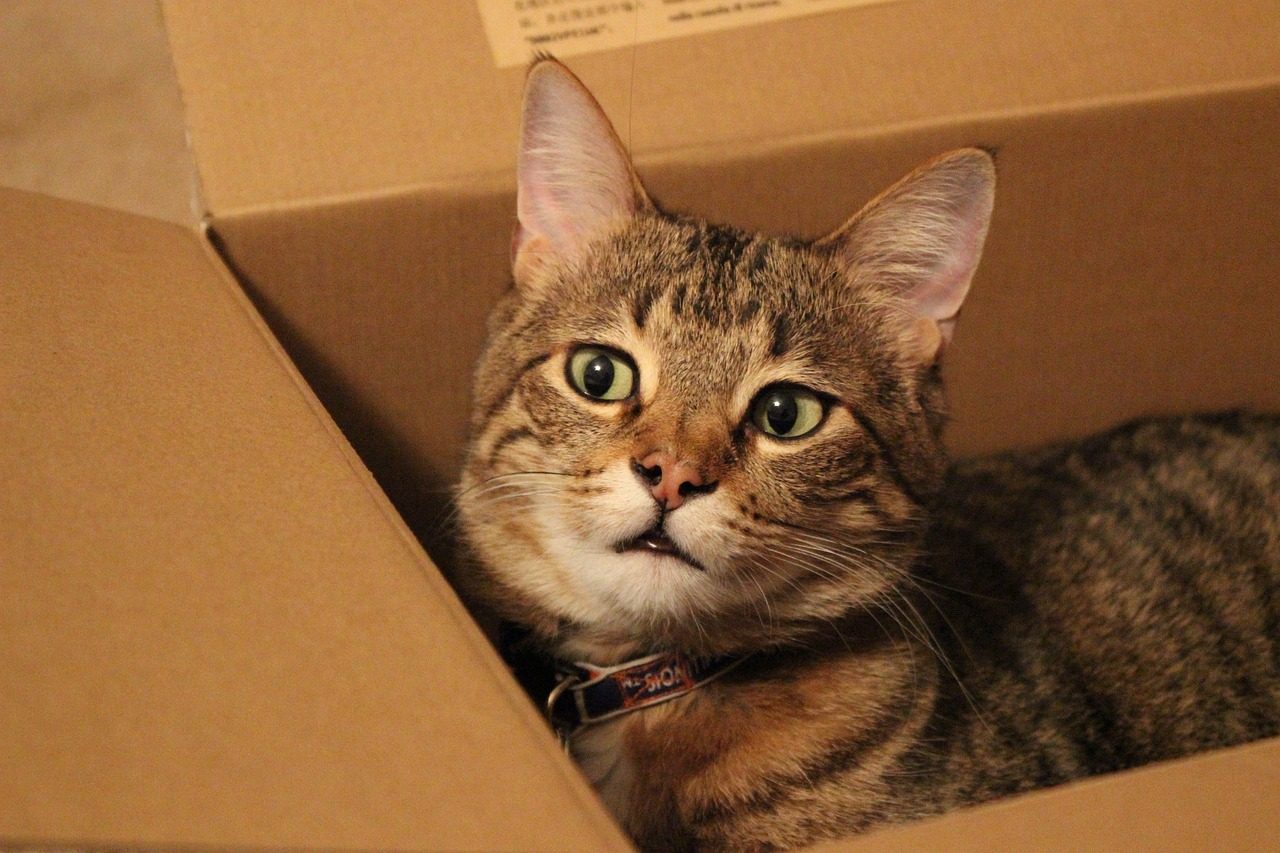
So where does this leave you and your expensive cat bed purchase? It’s not that the bed is bad or that your cat is being difficult. You’re simply fighting against millions of years of evolutionary programming that tells your cat exactly what makes them feel safe, warm, and secure. Where you may see a simple cardboard box, your cat sees a safe, luxury cave that promises warmth and protection.
The truth is, the best “cat bed” might actually be that free cardboard box combined with a soft blanket inside. This gives your cat the enclosed feeling they crave while also providing some cushioning. Some cats do eventually warm up to traditional beds, particularly ones with high sides or hooded designs that mimic that enclosed box feeling. Honestly, the key is understanding that what looks luxurious to human eyes doesn’t necessarily translate to comfort for feline sensibilities.
The next time you see your cat squeezed impossibly into a too-small box while their expensive bed sits empty nearby, you’ll understand they’re not being stubborn. They’re simply following instincts that have kept cats alive and thriving for millennia. That cardboard box offers security, warmth, hunting advantages, stress relief, and territorial satisfaction all wrapped into one perfect package. What do you think, should we all just embrace the cardboard and skip the fancy beds entirely? Tell us in the comments.





